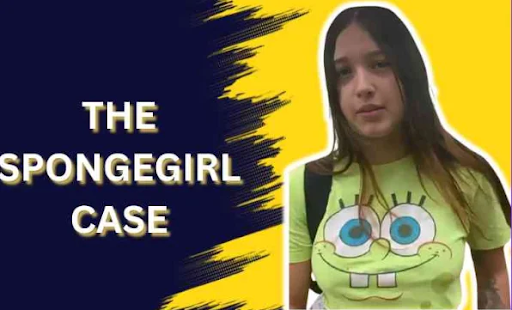Detectives investigate Spongegirl’s activities, searching for clues and patterns. Even when faced with dead-ends, their determination remains undiminished.
Armchair detectives also become integral parts of the investigation process by sharing testimonies and theories. Furthermore, this case serves to foster creativity as artists create thought-provoking works that challenge social norms while exploring themes related to identity justice resilience.
This case provides an authentic illustration of investigative practices, and teachers use it to foster critical thinking among their students.
Mapping the Crime Scenes
The Spongegirl Case serves as a contemporary riddle, prompting reflection on societal reactions to mysterious phenomena and modern crime-solving processes. Utilizing both traditional investigative methods and cutting-edge technologies leads to an exhaustive examination of clues which uncover unexpected connections that help investigators piece together this complex mystery.
Investigations often capture public attention, sparking discussion on various forums and social media networks as amateur sleuths try their luck at amateur detective work. While these theories add intrigue, investigators caution against making decisions based on mere speculation without sufficient proof.
As the investigation unfolds, a variety of crime scenes sets the scene for a multifaceted mystery to unfold. From bustling city streets to quiet suburban communities, each setting lends new insight into this intriguing figure’s life story; motives emerge, alibi falsities fall away and clues become the cornerstones of an engaging narrative.
Identifying Suspects
Identification of suspects was achieved through careful consideration of cryptic clues and investigation into the timeline of events. Detectives searched crime scenes, consulted fingerprint experts, analyzed security camera footage, and utilized advanced technologies for digital traces analysis.
They interviewed eyewitnesses and monitored social media forums for any speculation or misinformation, showing how engaging with the public through open dialogue can help address misinformation quickly, identify suspects quickly, and prevent public panic.
As the investigation proceeded, a list of possible suspects became narrower and narrower. While Spongegirl remained unknown, her behavior indicated she could possibly belong to one or more dark web hacking communities due to cryptic references and technical frameworks matching those associated with those groups’ cyberpunk and crypto-anarchist ideologies.
Examining Evidence
Spongegirl’s mysterious symbols and shifting neighborhoods lead forensic experts to thoroughly inspect crime scenes for clues. Detectives closely scrutinize fingerprints and digital traces while various objects – like torn pieces of fabric and diaries with hidden messages – can provide further insights into her motives and connections.
Spongegirl’s disappearance captured public imagination, leading to discussions across multiple online platforms and communities sharing testimonies and theories in order to form virtual investigations alongside law enforcement efforts. Unfortunately, however, such joint efforts don’t come without obstacles – false leads often hamper progress in solving cases.
Detectives continue their work diligently in spite of these hurdles, using modern crime-solving complexities as well as issues related to social media safety and intellectual property rights to solve this complex case. The Spongegirl investigation serves as an illustration of this complexity while raising issues around social media safety and intellectual property rights.
Performing Physical Examinations
As more was learned about Spongegirl’s identity, numerous theories and speculations emerged – leading to widespread media coverage and inspiring discussions across social platforms.
As investigators began to piece together the clues, they discovered that many mysterious incidents shared similar characteristics – sparking even greater intrigue over these events and prompting law enforcement officials to act swiftly.
Investigations also yielded evidence implicating various individuals in various crimes. Furthermore, stolen items and disputes related to intellectual property rights added a further layer of complexity to this case.
Eyewitness testimonies also generated confusion, while recovered items, including what appeared to be her signature disguise (including a piece of fabric believed to have come loose during its original installation), didn’t match any known materials and further fuelled speculation that she may possess access to exclusive textiles.
Interviewing Witnesses
Forensic experts and detectives are currently gathering evidence as they follow leads and interview witnesses, seeking information about identity, motivation, sighting locations and times as well as witness accounts from Spongegirl sightings. Furthermore, digital traces from social media platforms could potentially help in the identification process.
Although speculation may add mystery and intrigue to a true crime case, it is wise to exercise caution and await confirmation with concrete evidence before jumping to conclusions based on speculation alone. Such speculations could prove misleading or even hinder an investigation process.
The Spongegirl phenomenon captured public imagination and spurred on armchair detectives to hone their investigative skills. Additionally, it raised key issues related to law enforcement procedures, technological scrutiny and community participation for high-profile cases; further encouraging conversations on admiration versus obsession in true crime investigations.




